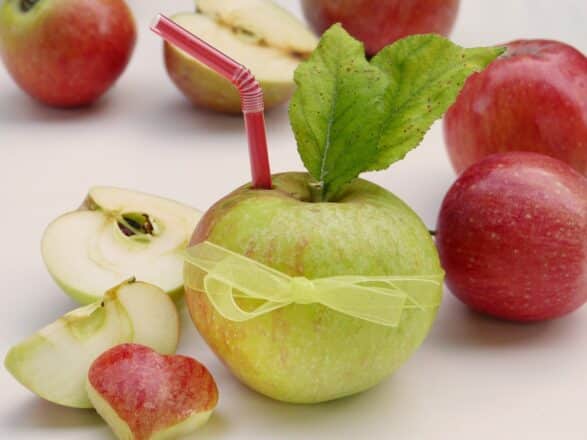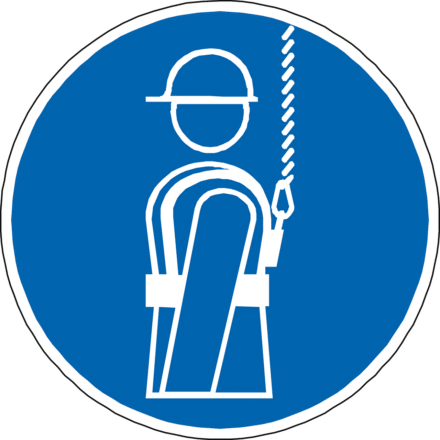Keeping on your feet as you age can be a tricky dance, but don’t fret as you can conquer this rhythm with a little help! “The Benefits of Physical Activity in Preventing Falls” shares important strategies for older adults to help reduce injury related to falls.
Prioritize regular appointments with your health care providers to assess your risk. Keep tabs on all your medications and their side effects, as some may heighten the likelihood of falls. Regularly engaging in physical activities like walking, water workouts, or tai chi can boost your strength, balance, coordination, and flexibility – thereby keeping falls at bay. Consider donning sturdy shoes with nonslip soles, and decluttering your home by fixing loose floorboards and cleaning spills straight away to reduce fall hazards. Good lighting at home is key to prevent stumbling over objects, and using assistive devices like handrails and raised toilet seats could be handy.
Don’t shy away from reaching out to an occupational therapist for custom fall prevention strategies. Remember, investing in fall prevention is an investment in your independence!
The Impact of Physical Activity on Fall Prevention
Physical activity plays a fantastic role in fall prevention, especially for older adults. It’s all about engaging your body and staying active, which boosts your muscle tone, coordination, balance, and flexibility. These factors are fundamental in minimizing incidences of tripping or falling.
The relationship between physical activity and fall prevention
The link between physical activity and fall prevention is strong and based on the principle of “use it or lose it.” Staying active ensures your muscles remain agile, and this augments your balance and coordination skills, which are crucial in preventing falls. Inactivity, however, leads to a loss of power, muscle tone, and mobility, subsequently increasing the risk of tripping or falling.
Various physical activities and their role in fall prevention
Engaging in different types of physical workout strengthens various muscles in your body. A mix of cardiovascular exercises, strength training, balance exercises, and flexibility workouts can support your body and consequently prevent falls. For instance, strength training enhances the power of the muscles that protect your body from falls, while flexibility workouts improve your range of motion, helping you stay balanced.
Scientific studies supporting the impact of physical activity on preventing falls
Numerous scientific investigations have presented the vast benefits of physical activity in fall prevention. They have revealed a significant decrease in the incidence of falls amongst people who partake in regular physical activity.
Health Care Provider Visits
Consistent health care provider visits can play a major role in fall prevention. Such regular check-ups help determine your risk of experiencing a fall and devise strategies to mitigate it.
The importance of regular check-ups
Regular check-ups go a long way in preventing falls. They provide health care professionals with the opportunity to assess your overall health, your risk of falling, and recommend preventive measures.
How health care professionals can assess fall risk
Healthcare providers can assess fall risk by evaluating your medical history, physical capabilities, and current medications. They may perform various tests, such as gait assessment and balance tests, to determine your risk level.
The role of healthcare in maintaining mobility and preventing falls
Healthcare professionals play a significant role in maintaining mobility and keeping falls at bay. They provide expert advice on maintaining strength and balance and review medications, which can sometimes contribute to falls.

Medication and Fall Risks
Strange as it may sound, some medications can actually increase your fall risks. Their side effects can sometimes induce dizziness, lack of coordination, and other fall-related complications.
How medication can increase fall risks
Certain classes of medication can have side-effects that include dizziness, disorientation, and confusion, all of which can increase the risk of falls. Hypotension-inducing drugs, sedatives, and some types of antidepressants are some examples.
Reviewing medications with healthcare provider
It’s crucial that you review all your medications with your healthcare provider, who will be able to assess the risks associated with each. They can adjust dosages, or consider different medications with fewer risk factors.
Safe medication practices to reduce fall risk
Safe medication practices are a vital part of reducing the risk of falls. This entails taking prescribed medications in the right doses and at the correct times.
Specific Physical Activities for Fall Prevention
Some physical activities have been proven to be exceptionally beneficial for fall prevention. These exercises not only contribute to improved overall health but are also easy to do and enjoyable.
Walking as a fall prevention measure
Walking is a wonderful way to prevent falls. It’s a low-impact physical activity that improves your strength, balance, and flexibility, all of which can help prevent falls.
Water workouts for balance and coordination
Water workouts, or aqua aerobics, are another beneficial physical activity for preventing falls. The water provides resistance that strengthens muscles while also supporting the body, reducing strain on the joints and enhancing balance and coordination.
Tai Chi and its benefits for preventing falls
Tai Chi is an ancient Chinese martial art that focuses on balance, strength, and flexibility, all key components in preventing falls. Its low-impact, slow-motion movements make it a great fall prevention exercise for people of all ages.

Proper Footwear and Fall Prevention
Wearing suitable footwear is a simple yet effective way to prevent falls. The correct shoes offer stability and support, making it easier for you to maintain your balance.
The importance of choosing the right shoes
Choosing the right shoes can dramatically reduce your risk of falling. Your shoes should fit well, be comfortable, and offer support to prevent any instability while walking.
Features of sensible, sturdy shoes
The most recommended shoes for fall prevention are sturdy, low-heeled ones that have nonslip soles. They should also fit well and not be too tight or too loose.
The role of nonslip soles in preventing falls
Nonslip soles offer traction, which can prevent slips and falls. They come in handy especially in slippery or wet conditions.
Home Hazards and Fall Prevention
Injuries at home due to falls are quite common, mainly because of certain home hazards that increase fall risks. However, with careful attention and preventive measures, these risks can be mitigated.
Common home hazards increasing fall risks
Loose rugs, clutter, poor lighting, and slippery surfaces are among the common home hazards that can increase the risk of falls. It’s crucial to identify and address these issues to enhance the safety of your living environment.
Securing loose rugs and repairing loose floorboards
Securing loose rugs with anti-slip mats and repairing loose floorboards can significantly decrease your chances of tripping or falling at home. It’s an easy yet effective way to make your home safer.
The importance of cleaning up spills immediately
Cleaning up spills as soon as they happen can prevent slips and falls. Wet or damp surfaces can be incredibly slippery and pose a significant falling hazard.
Lighting and Fall Prevention
Proper lighting plays a significant role in preventing falls. It enhances your visibility, which helps you avoid potential hazards that could cause a fall.
The relationship between proper lighting and fall prevention
Proper lighting can hugely reduce the risk of trips and falls. It brightens up areas, reducing shadows, and makes it easier to spot potential fall hazards around your home.
Suggestions for keeping homes brightly lit
Use a combination of natural and artificial lighting sources. Ensure stairways and hallways are well-lit, and consider the use of nightlights in bedrooms and bathrooms for nighttime visibility.
How proper lighting can prevent trips and falls
By improving visibility and reducing shadows, proper lighting helps identify and avoid obstacles and potential tripping hazards. This results in a safer environment within your home.
Assistive Devices for Fall Prevention
For those with mobility issues, various assistive devices can help reduce fall risks. These devices provide support and stability, thus preventing falls.
Types of assistive devices
There are many types of assistive devices, including canes, walkers, wheelchairs, handrails, nonslip treads, and grab bars.
The benefits of handrails, nonslip treads, and grab bars
Handrails provide support when using stairs, further reducing the risk of falls. Nonslip treads increase friction and reduce slippage, while grab bars positioned in bathrooms and near beds provide extra support when rising or maneuvering.
When and how to use raised toilet seats for fall prevention
Raised toilet seats can dramatically lower the risk of falls in bathrooms, especially for seniors. They make sitting down and getting up from the toilet much easier and safer.
Role of Occupational Therapist in Fall Prevention
Occupational therapists (OTs) play a significant role in fall prevention. They provide strategic insights and tailored solutions to help prevent falls.
The benefits of consulting an occupational therapist
Consulting an occupational therapist has numerous benefits. They can create personalized fall prevention strategies based on your physical abilities, lifestyle and living environment.
How occupational therapists can provide fall prevention strategies
Occupational therapists perform comprehensive assessments and identify potential risks within your home. They can then provide multiple strategic solutions such as suggesting modifications to your home and recommending the use of assistive devices.
Specific solutions suggested by occupational therapists
OTs may suggest various modifications such as installing grab bars, eliminating home hazards, and improving lighting. They can also recommend therapeutic exercises and assistive devices.
Investing in Fall Prevention Measures
Investing in fall prevention measures is critical and incredibly cost-effective. It can make a remarkable difference in maintaining your overall health and independence.
The cost-effectiveness of fall prevention
Although it may seem an investment, spending on fall prevention is actually cost-saving in the long run. Consider the medical bills, rehabilitation costs, and even the potential loss of independence that a severe fall could result in.
How investing in fall prevention can maintain independence
Fall prevention measures not only keep you physically healthy; they maintain your independence and quality of life. You can continue going about your daily routines with fewer risks and increased confidence.
Exploring different investment options for fall prevention
Various options are available to invest in fall prevention. You could invest in home modifications, regular health check-ups, appropriate footwear, and physical activities classes. Investments into assistive technology like handrails or raised toilet seats also go a long way in preventing falls.
So, remember, while falling may seem like something that just happens, there’s a lot you can do to prevent it. By maintaining physical activity, having regular check-ups, managing your medication, choosing your footwear wisely, eliminating home hazards, keeping your home brightly lit, and using assistive devices, you can significantly reduce your risk of falls. Consulting with occupational therapists and investing in fall prevention measures are proactive ways to maintain your independence and quality of life. Now that you’re armed with these tips, you can start implementing these strategies to keep you upright and on-the-go!
